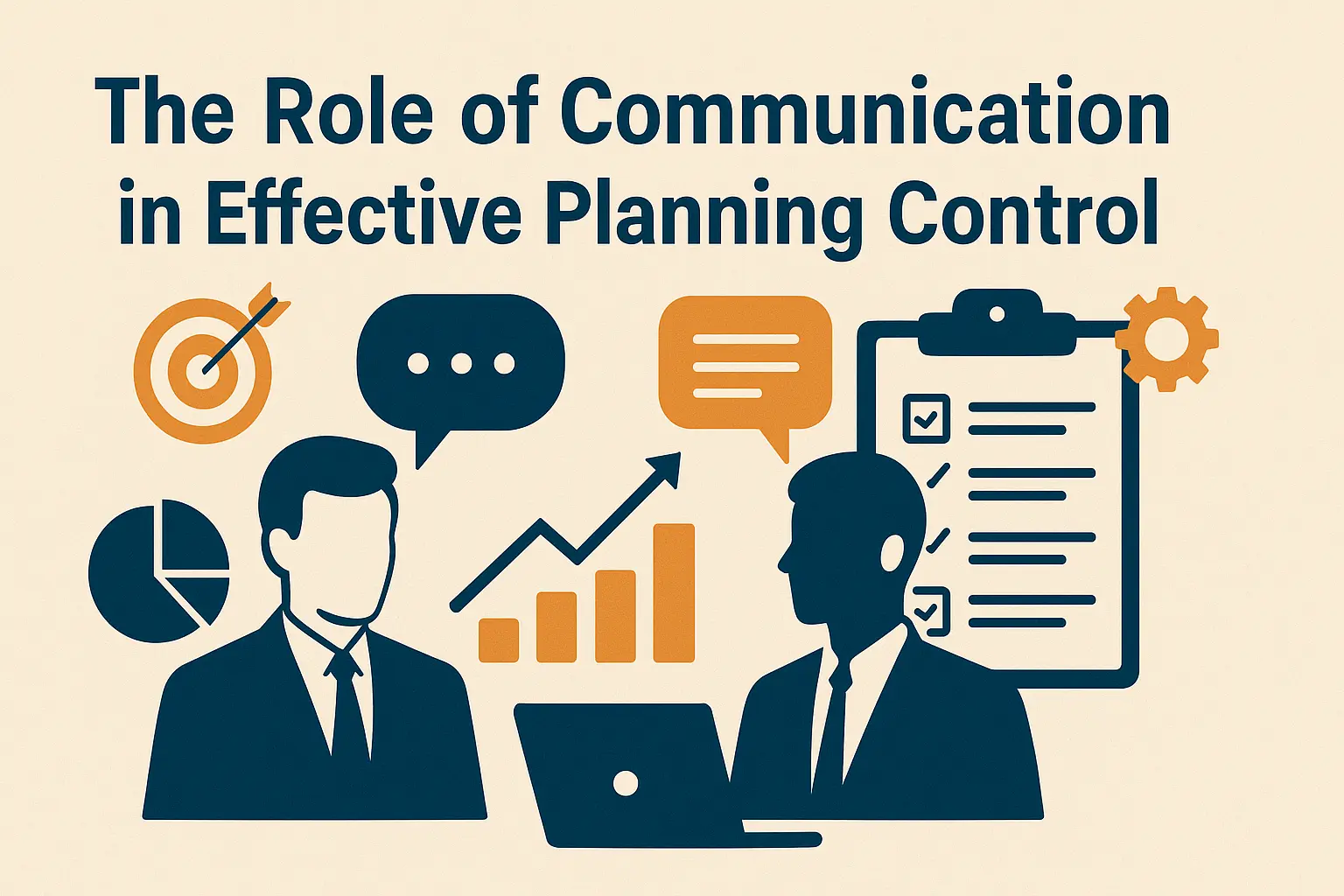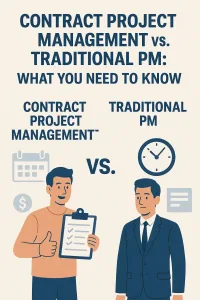Introduction
Planning control serves as a critical framework that ensures projects are executed efficiently and effectively. It encompasses the processes and methodologies used to monitor project progress, assess performance against the established plan, and make necessary adjustments to keep the project on track. The significance of planning control cannot be overstated; it is essential for achieving project goals, managing resources, and ensuring stakeholder satisfaction. Without robust planning control, projects can easily veer off course, leading to delays, budget overruns, and unmet objectives.
However, the effectiveness of planning control is heavily reliant on communication strategies. Effective communication facilitates the flow of information among project stakeholders, ensuring that everyone is aligned with the project goals and aware of their roles and responsibilities. It enables project managers to convey critical updates, gather feedback, and foster collaboration among team members. By establishing clear communication channels, project managers can enhance the planning control process, making it more responsive and adaptable to changes.
This blog post will delve into the intricate relationship between communication and planning control in project management. We will explore the following key areas:
- Defining Planning Control: A closer look at what planning control entails and its importance in the successful execution of projects.
- The Role of Communication: An examination of how effective communication strategies can enhance planning control, including techniques for improving information dissemination and stakeholder engagement.
- Structure of the Blog Post: An outline of the subsequent sections, which will provide practical insights and strategies for project managers and communication specialists to implement in their planning control processes.
By understanding the pivotal role of communication in planning control, project managers can better navigate the complexities of project execution and drive their teams toward success.
Understanding Planning Control
Effective planning control is a fundamental aspect of project management that ensures projects are executed within the defined parameters of scope, time, cost, and quality. It involves a systematic approach to monitoring and adjusting project plans to meet objectives and deliver successful outcomes. Here’s a comprehensive overview of the concept, its key components, and the challenges faced in planning control.
The Concept of Planning Control in Project Management
Planning control refers to the processes and methodologies used to ensure that a project remains on track and aligned with its goals. It encompasses the establishment of clear objectives, the definition of deliverables, and the creation of a timeline that guides project execution. By implementing effective planning control, project managers can anticipate potential issues, make informed decisions, and adapt to changes as they arise, ultimately leading to enhanced project success [5][13].
Key Components of Effective Planning Control
- Scope: Clearly defining what is included and excluded in the project is crucial for managing stakeholder expectations. A well-defined project scope provides a framework for planning and helps prevent scope creep, which can derail project timelines and budgets [10].
- Time: Establishing a realistic timeline is essential for effective planning control. This involves setting milestones and deadlines that guide the project team in their efforts to complete tasks on schedule. Monitoring progress against the timeline allows project managers to identify delays early and take corrective actions [10].
- Cost: A well-defined project budget is vital for effective cost control. It involves estimating costs accurately and monitoring expenditures throughout the project lifecycle. By keeping costs within budget, project managers can ensure that resources are allocated efficiently and that financial objectives are met [13].
- Quality: Maintaining quality standards is a critical component of planning control. This involves setting quality benchmarks and implementing processes to ensure that deliverables meet these standards. Regular quality assessments help identify areas for improvement and ensure that the project meets stakeholder expectations [10].
Common Challenges Faced in Planning Control
Despite the importance of planning control, project managers often encounter several challenges, including:
- Scope Creep: Uncontrolled changes or continuous growth in project scope can lead to delays and budget overruns. Effective communication strategies are essential to manage stakeholder expectations and prevent scope creep [15].
- Resource Shortages: Limited availability of resources can hinder project progress. Proactive planning and clear communication about resource needs can help mitigate this challenge [15].
- Stakeholder Disagreements: Conflicts among stakeholders can disrupt planning control efforts. Establishing transparent communication channels and involving stakeholders in decision-making can foster collaboration and alignment [14].
- Technical Uncertainties: Unforeseen technical issues can impact project timelines and quality. Regular monitoring and open communication about potential risks can help project managers address these uncertainties effectively [15].
The Importance of Communication in Project Management
Effective communication is a cornerstone of successful project management, playing a pivotal role in ensuring that projects meet their objectives and are delivered on time and within budget. Here are some key points that highlight the significance of communication in enhancing planning control:
Role of Communication in Project Success: Communication serves as the foundation for aligning the vision and goals of all stakeholders involved in a project. It ensures that everyone is on the same page, which is crucial for fostering collaboration and teamwork. When project managers establish clear communication channels, they facilitate a shared understanding of project objectives, leading to improved coordination and execution [2][12].
Types of Communication: In project management, various types of communication are utilized, each serving a distinct purpose:
- Formal Communication: This includes structured methods such as meetings, reports, and presentations, which are essential for conveying important information and updates.
- Informal Communication: Casual interactions, such as conversations over coffee or quick chats, can also play a significant role in building relationships and fostering a collaborative environment.
- Verbal Communication: This encompasses spoken interactions, which can be direct and immediate, allowing for real-time feedback and clarification.
- Non-Verbal Communication: Body language, facial expressions, and other non-verbal cues can significantly impact how messages are received and interpreted, making it essential for project managers to be aware of these signals [11].
- Mitigating Risks and Misunderstandings: Effective communication is instrumental in identifying and addressing potential risks before they escalate into significant issues. By promoting open discussions and encouraging feedback, project managers can uncover misunderstandings early on, allowing for timely interventions. This proactive approach not only helps in managing expectations but also enhances stakeholder engagement, ultimately leading to better project outcomes [12][14].
Communication Strategies for Effective Planning Control
Effective planning control in project management is significantly influenced by robust communication strategies. A well-structured communication plan not only facilitates the flow of information but also ensures that all stakeholders are aligned with the project goals. Here are some key points to consider when developing communication strategies that enhance planning control.
1. The Concept of a Communication Plan
A communication plan is a strategic document that outlines how information will be shared throughout the project lifecycle. It includes several essential elements:
- Objectives: Clearly defined goals for what the communication plan aims to achieve.
- Target Audience: Identification of stakeholders who need to be informed, including team members, clients, and external partners.
- Communication Methods: Specification of the channels to be used, such as emails, meetings, reports, and project management software.
- Frequency: Determining how often updates will be communicated to keep stakeholders informed and engaged.
- Feedback Mechanisms: Establishing ways for stakeholders to provide input and feedback, ensuring that communication is a two-way process.
Implementing a comprehensive communication plan is crucial for maintaining clarity and transparency throughout the project, which ultimately enhances planning control [1][10].
2. Importance of Stakeholder Analysis and Engagement
Stakeholder analysis is a critical component of effective communication in project management. Understanding the needs, expectations, and influence of each stakeholder allows project managers to tailor their communication strategies accordingly. Key aspects include:
- Identifying Stakeholders: Recognizing all parties involved in the project, from team members to clients and regulatory bodies.
- Assessing Influence and Interest: Evaluating how much influence each stakeholder has on the project and their level of interest in its outcomes.
- Engagement Strategies: Developing targeted communication approaches that address the specific concerns and interests of different stakeholders. This may involve regular updates for highly engaged stakeholders and less frequent communication for those with lower interest.
Engaging stakeholders effectively ensures that they remain informed and invested in the project, which is vital for successful planning control [2][5][12].
3. Use of Collaborative Tools and Technologies
In today’s digital age, leveraging collaborative tools and technologies can significantly enhance communication and planning control. These tools facilitate real-time communication and collaboration among project teams, leading to improved efficiency and effectiveness. Some popular tools include:
- Project Management Software: Platforms like Asana, Trello, or Microsoft Project allow teams to track progress, assign tasks, and share updates seamlessly.
- Communication Platforms: Tools such as Slack or Microsoft Teams enable instant messaging and video conferencing, fostering quick discussions and decision-making.
- Document Sharing Services: Google Drive or Dropbox facilitate easy access to project documents, ensuring that all stakeholders have the latest information at their fingertips.
By utilizing these technologies, project managers can create a more connected and responsive project environment, which is essential for effective planning control [4][14][15].
Measuring the Effectiveness of Communication in Planning Control
Effective communication is a cornerstone of successful project management, particularly in the realm of planning control. By implementing robust communication strategies, project managers can significantly enhance the effectiveness of their planning processes. This section explores various methods for assessing communication effectiveness in project planning, focusing on key performance indicators (KPIs), feedback mechanisms, and the importance of continuous improvement.
Key Performance Indicators (KPIs) for Communication in Projects
To measure the effectiveness of communication in project planning, it is essential to establish clear KPIs. These indicators can help project managers evaluate how well communication strategies are functioning and identify areas for improvement. Some relevant KPIs include:
- Response Time: The speed at which team members respond to communications can indicate the clarity and urgency of the messages being conveyed. A shorter response time often reflects effective communication practices.
- Stakeholder Engagement Levels: Measuring the participation and involvement of stakeholders in project discussions can provide insights into how well communication strategies are fostering collaboration and engagement.
- Information Retention Rates: Assessing how much information team members retain from communications can help determine the clarity and effectiveness of the messages delivered.
- Issue Resolution Time: Tracking the time taken to resolve issues that arise during the project can indicate the effectiveness of communication in addressing problems promptly.
By regularly monitoring these KPIs, project managers can gain valuable insights into the effectiveness of their communication strategies and make informed adjustments as needed [2][10].
Feedback Mechanisms to Gather Insights
Incorporating feedback mechanisms is crucial for understanding the effectiveness of communication in project planning. These mechanisms can take various forms, including:
- Surveys and Questionnaires: Regularly distributing surveys to team members and stakeholders can help gather their perceptions of communication effectiveness. Questions can focus on clarity, frequency, and relevance of the information shared.
- One-on-One Meetings: Conducting individual meetings with team members allows for in-depth discussions about communication practices and can uncover specific challenges or suggestions for improvement.
- Team Retrospectives: Implementing regular retrospectives at the end of project phases can provide a platform for team members to discuss what communication strategies worked well and what could be improved.
By actively seeking feedback, project managers can identify gaps in communication and make necessary adjustments to enhance overall effectiveness [3][12].
Importance of Continuous Improvement in Communication Practices
Continuous improvement is vital for maintaining effective communication in project planning. As projects evolve, so do the communication needs of the team and stakeholders. To foster a culture of continuous improvement, project managers should:
- Regularly Review Communication Strategies: Periodically assessing the effectiveness of current communication practices can help identify areas for enhancement. This can involve revisiting KPIs and feedback gathered from team members.
- Encourage Open Dialogue: Creating an environment where team members feel comfortable sharing their thoughts on communication practices can lead to valuable insights and innovative solutions.
- Invest in Training: Providing training sessions on effective communication techniques can equip team members with the skills needed to communicate more effectively, ultimately improving planning control.
By prioritizing continuous improvement, project managers can ensure that their communication strategies remain relevant and effective, thereby enhancing the overall success of their planning control efforts [4][11][15].
Conclusion
Effective planning control is paramount to achieving project goals and ensuring that resources are utilized efficiently. A critical component of successful planning control is robust communication. Throughout this discussion, we have highlighted several key insights that underscore the importance of communication in enhancing planning control:
- Clarity and Alignment: Effective communication ensures that all stakeholders share a common understanding of project objectives, timelines, and responsibilities. This alignment is essential for maintaining focus and direction throughout the project lifecycle [3][15].
- Feedback Mechanisms: Open lines of communication facilitate timely feedback, allowing project managers to make necessary adjustments to plans based on stakeholder input and changing circumstances. This adaptability is crucial for navigating the complexities of project execution [1][6].
- Utilization of Technology: Leveraging appropriate communication tools can streamline information sharing and enhance collaboration among team members. By establishing clear communication channels, project managers can ensure that relevant information reaches the right people at the right time [9][10].
As project managers and communication specialists, it is vital to implement these communication strategies within your projects. By doing so, you can significantly enhance your planning control effectiveness, leading to improved project outcomes.
Find out more about Shaun Stoltz https://www.shaunstoltz.com/about/.
This post was written by an AI and reviewed/edited by a human.



